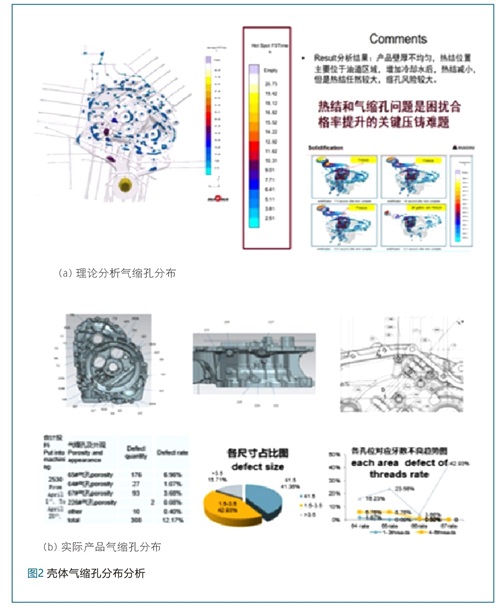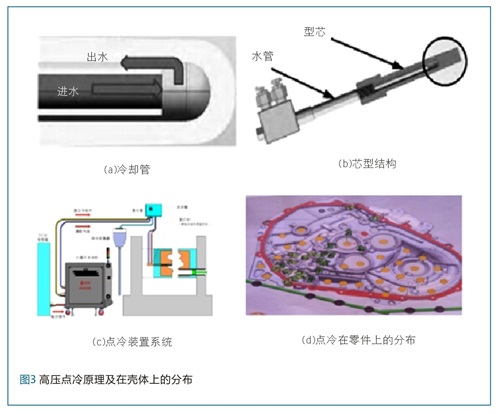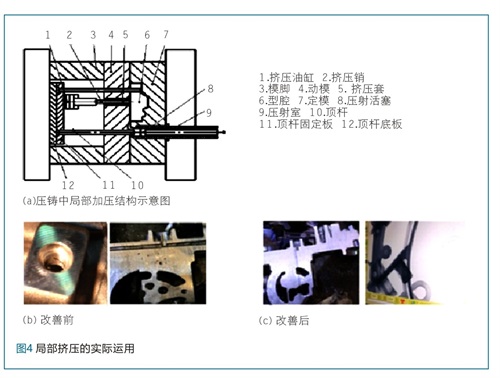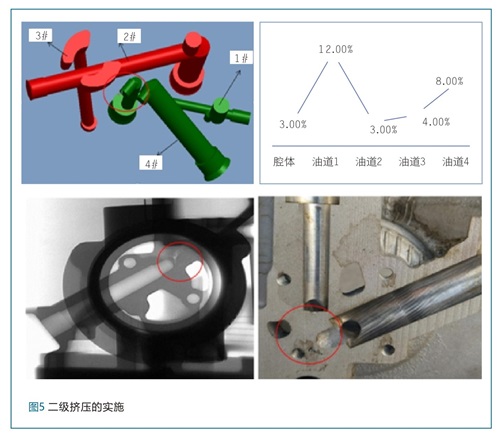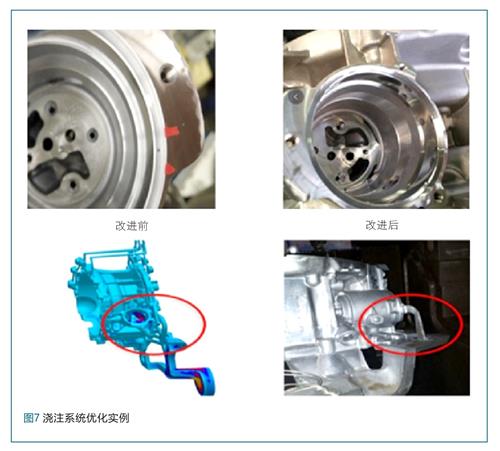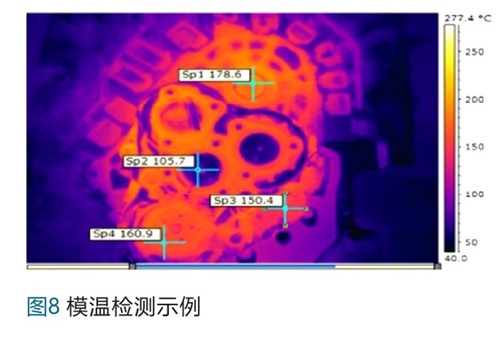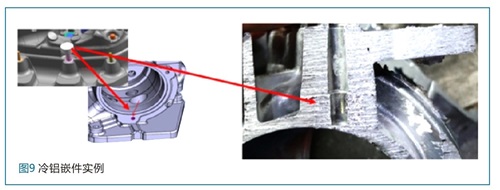Pick to: Dual-clutch gearbox products are wet dual-clutch gearbox, the supporting shell consists of clutch and gearbox shell, the two shells produced by high pressure casting method, in the process of product development and production has experienced a difficult quality improvement process, blank comprehensive qualified rate by about 60% 95% by the end of the ascent to 2020 levels, This article summarizes solutions to typical quality problems.
Wet dual-clutch transmission, which uses an innovative cascade gear set, an electro-mechanical shift drive system and a new electro-hydraulic clutch actuator. The shell blank is made of high pressure casting aluminum alloy, which has the characteristics of light weight and high strength. There are hydraulic pump, lubricating fluid, cooling pipe and external cooling system in the gearbox, which put forward higher requirements on the comprehensive mechanical performance and sealing performance of the shell. This paper explains how to solve the quality problems such as shell deformation, air shrinkage hole and leakage pass rate which affect the pass rate greatly.
1、Solution of deformation problem
Figure 1 (a) below,The gearbox is composed of a high-pressure cast aluminum alloy gearbox housing and a clutch housing. The material used is ADC12, and its basic wall thickness is about 3.5mm. The gearbox shell is shown in Figure 1 (b). The basic size is 485mm (length) ×370mm (width) × 212mm (height), the volume is 2481.5mm3, the projected area is 134903mm2, and the net weight is about 6.7kg. It is a thin-walled deep-cavity part. Considering the manufacturing and processing technology of the mold, the reliability of product molding and production process, the mold is arranged as shown in Figure 1 (c), which is composed of three groups of sliders, moving mold (in the direction of the outer cavity) and fixed mold (in the direction of the inner cavity), and the thermal shrinkage rate of the casting is designed to be 1.0055%.
Actually, in the process of initial die casting test, it was found that the position size of the product produced by die casting was quite different from the design requirements (some positions were over 30% off), but the mold size was qualified and the shrinkage rate compared with the actual size was also in line with the shrinkage law. In order to find out the cause of the problem, 3D scanning of the physical shell and theoretical 3D was used for comparison and analysis, as shown in Figure 1 (d). It was found that the base positioning area of the blank was deformed, and the deformation amount was 2.39mm in area B and 0.74mm in area C. Because the product is based on the convex point of blank A, B, C for the subsequent processing positioning benchmark and measurement benchmark, this deformation leads to in the measurement, other size projection to A, B, C as the basis of the plane, the position of the hole is out of order.
Analysis of the causes of this problem:
①High pressure casting die design principle is one of the products after demoulding, giving shape to the product on the dynamic model, which requires the effect on the dynamic model of package force is greater than the forces acting on the fixed mold bag tight, because of the deep cavity special products at the same time, deep cavity within the cores on the fixed mold and outside cavity formed surface on the moving mould products to decide the direction of the mold parting when will inevitably suffer the traction;
②There are sliders in the left, lower and right directions of the mold, which play an auxiliary role in clamping before demold. The minimum support force is at the upper B, and the overall tendency is to concave in the cavity during thermal shrinkage. The above two main reasons lead to the largest deformation at B, followed by C.
The improvement scheme to solve this problem is to add a fixed die ejection mechanism Figure 1 (e) on the fixed die surface. At B increased 6 set mould plunger, adding two fixed mould plunger in the C, fixed pin rod is to rely on reset peak, when moving mould clamping plane set the reset lever press it into a mould, mould automatic die pressure disappears, the back of the plate spring and then push the top peak, take the initiative to promote products emerge from the fixed mold, so as to realize offset demoulding deformation.
After mold modification, the demoulding deformation is reduced successfully. As shown in FIG.1 (f), the deformations at B and C are effectively controlled. Point B is +0.22mm and point C is +0.12, which meet the requirement of the blank contour of 0.7mm and achieve mass production.
2、Solution of shell shrinkage hole and leakage
As is known to all, high pressure casting is a forming method in which the liquid metal is quickly filled into the metal mold cavity by applying certain pressure and solidifies rapidly under pressure to obtain the casting. However, subject to the characteristics of product design and die casting process, there are still some areas of hot joints or high-risk air shrinkage holes in the product, which is due to:
(1)Pressure casting uses high pressure to press liquid metal into the mold cavity at high speed. The gas in the pressure chamber or mold cavity cannot be completely discharged. These gases are involved in liquid metal and eventually exist in the casting in the form of pores.
(2)The solubility of gas in liquid aluminum and solid aluminum alloy is different. In the solidification process, gas is inevitably precipitated.
(3)The liquid metal solidifies rapidly in the cavity, and in the case of no effective feeding, some parts of the casting will produce shrinkage cavity or shrinkage porosity.
Take DPT’s products that have successively entered the tooling sample and small batch production stage as an example (see Figure 2) : The defect rate of the initial air shrinkage hole of the product was counted, and the highest was 12.17%, among which the air shrinkage hole larger than 3.5mm accounted for 15.71% of the total defects, and the air shrinkage hole between 1.5-3.5mm accounted for 42.93%. These air shrinkage holes were mainly concentrated in some threaded holes and sealing surfaces. These defects will affect the bolt connection strength, surface tightness and other functional requirements of the scrap.
To solve these problems, the main methods are as follows:
2.1 SPOT COOLING SYSTEM
Suitable for single deep cavity parts and large core parts. The forming part of these structures has only a few deep cavities or the deep cavity part of the core pulling, etc., and few molds are wrapped by a large amount of liquid aluminum, which is easy to cause overheating of the mold, causing sticky mold strain, hot crack and other defects. Therefore, it is necessary to force cool the cooling water at the pass point of the deep cavity mold. The inner part of the core with a diameter greater than 4mm is cooled by 1.0-1.5mpa high-pressure water, so as to ensure that the cooling water is cold and hot, and the surrounding tissues of the core can first solidify and form a dense layer, so as to reduce the shrinkage and porosity tendency.
As shown in Figure 3, combined with the statistical analysis data of simulation and actual products, the final point cooling layout was optimized, and the high-pressure point cooling as shown in Figure 3 (d) was set on the mold, which effectively controlled the product temperature in the hot joint area, realized the sequential solidification of products, effectively reduced the generation of shrinkage holes, and ensured the qualified rate.
2.2 Local extrusion
If the wall thickness of the product structure design is uneven or there are large hot nodes in some parts, shrinkage holes are prone to appear in the final solidified part, as shown in FIG. 4 (C) below. The shrinkage holes in these products can not be prevented by the die casting process and increasing the cooling method. At this time, local extrusion can be used to solve the problem. Partial pressure structure diagram as shown in figure 4 (a), namely the installed directly in the mould cylinder, after the molten metal filling into the mold and solidified before, not completely in the semi-solid metal liquid in the cavity, the at last solidification thick wall by extrusion rod pressure forced feeding to reduce or eliminate its shrinkage cavity defects, in order to obtain high quality of die casting.
2.3 The secondary extrusion
The second stage of extrusion is to set a double stroke cylinder. The first stroke completes the partial molding of the initial pre-casting hole, and when the liquid aluminum around the core is gradually solidified, the second extrusion action is started, and the double effect of pre-casting and extrusion is finally realized. Take the gearbox housing as an example, the qualified rate of the gas-tight test of the gearbox housing in the initial stage of the project is less than 70%. The distribution of leakage parts is mainly the intersection of oil passage 1# and oil passage 4# (red circle in Figure 5) as shown below.
2.4 CASTING RUNNER SYSTEM
The casting system of metal die casting mold is a channel that fills the cavity of die casting model with molten metal liquid in the press chamber of die casting machine under the condition of high temperature, high pressure and high speed. It includes straight runner, cross runner, inner runner and overflow exhaust system. They are guided in the process of the liquid metal filling cavity, the flow state, velocity and pressure of liquid metal transfer, the effect of exhaust and die mold plays an important in such aspects as the thermal equilibrium state of the control and regulation, therefore, gating system is decided to die casting surface quality as well as the important factor of the internal microstructure state. The design and finalization of pouring system must be based on the combination of theory and practice.
2.5 Process Optimization
Die casting process is a hot processing process which combines and uses the die casting machine, die casting die and liquid metal according to the pre-selected process procedure and process parameters, and obtains the die casting with the help of power drive. It takes all sorts of factors into consideration, Such as pressure (including injection force, injection specific pressure, expansion force, mold locking force), injection speed (including punch speed, internal gate speed, etc.), Filling speed, etc.), various temperatures (melting temperature of liquid metal, die casting temperature, mold temperature, etc.), various times (filling time, pressure holding time, mold retention time, etc.), thermal properties of the mold (heat transfer rate, heat capacity rate, temperature gradient, etc.), casting properties and thermal properties of liquid metal, etc. This plays a leading role in the die casting pressure, filling speed, filling characteristics and thermal properties of the mold.
2.6 The use of innovative methods
In order to solve the leakage problem of loose parts inside the specific parts of the gearbox shell, the solution of cold aluminum block was used pioneering after confirmation by both the supply and demand sides. That is, an aluminum block is loaded inside the product before filling, as shown in Figure 9. After filling and solidification, this insert remains inside the part entity to solve the problem of local shrinkage and porosity.
Post time: Sep-08-2022


